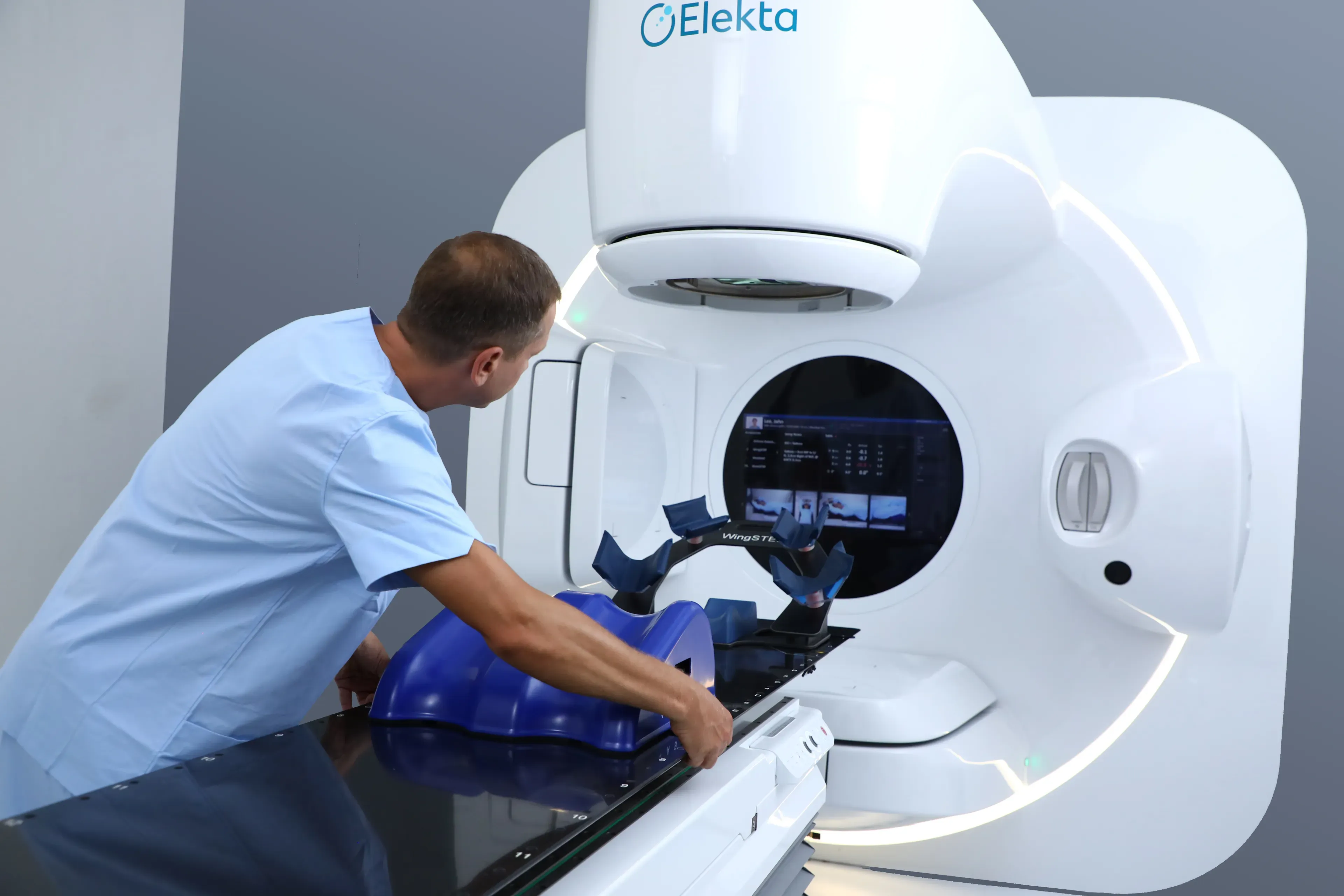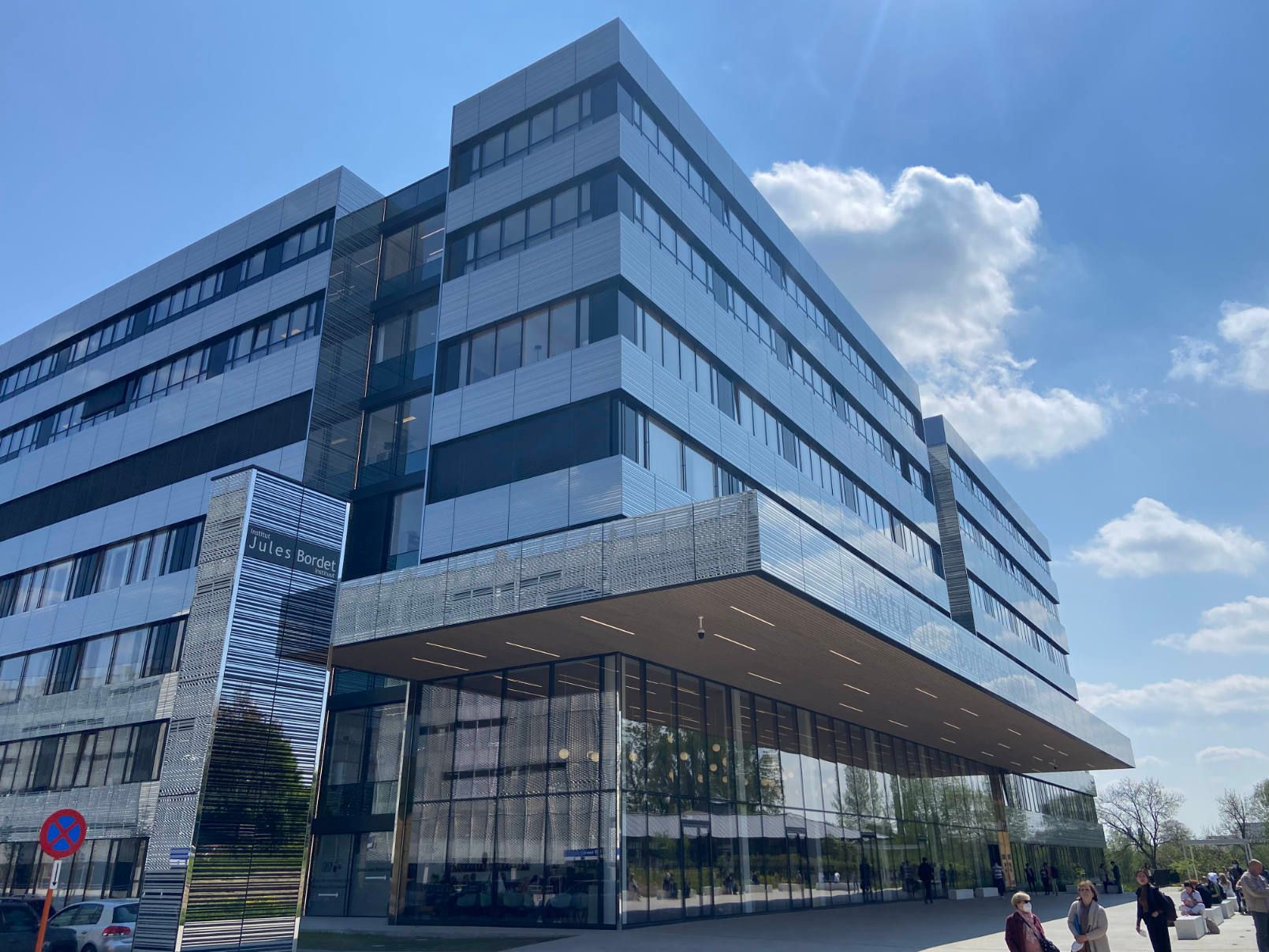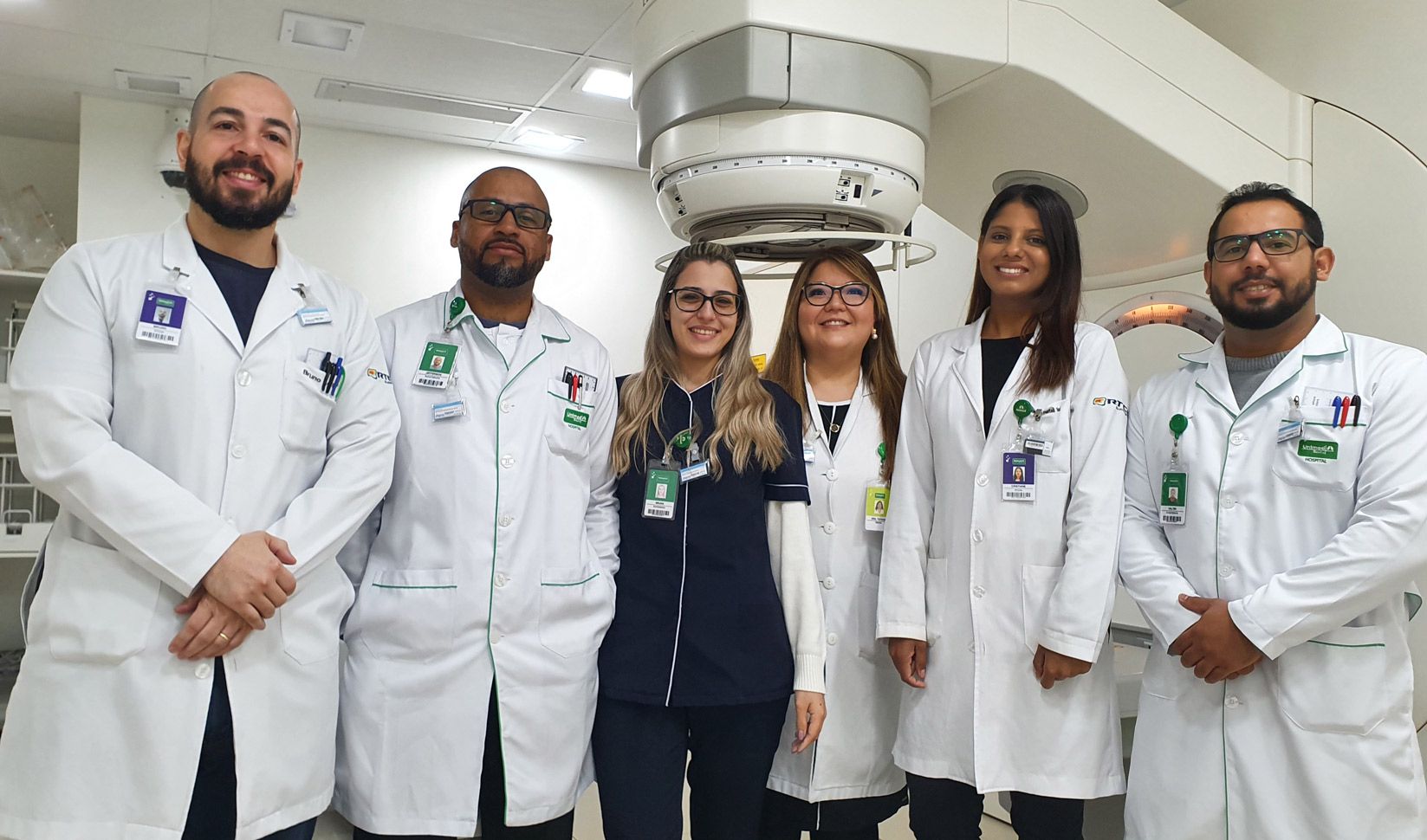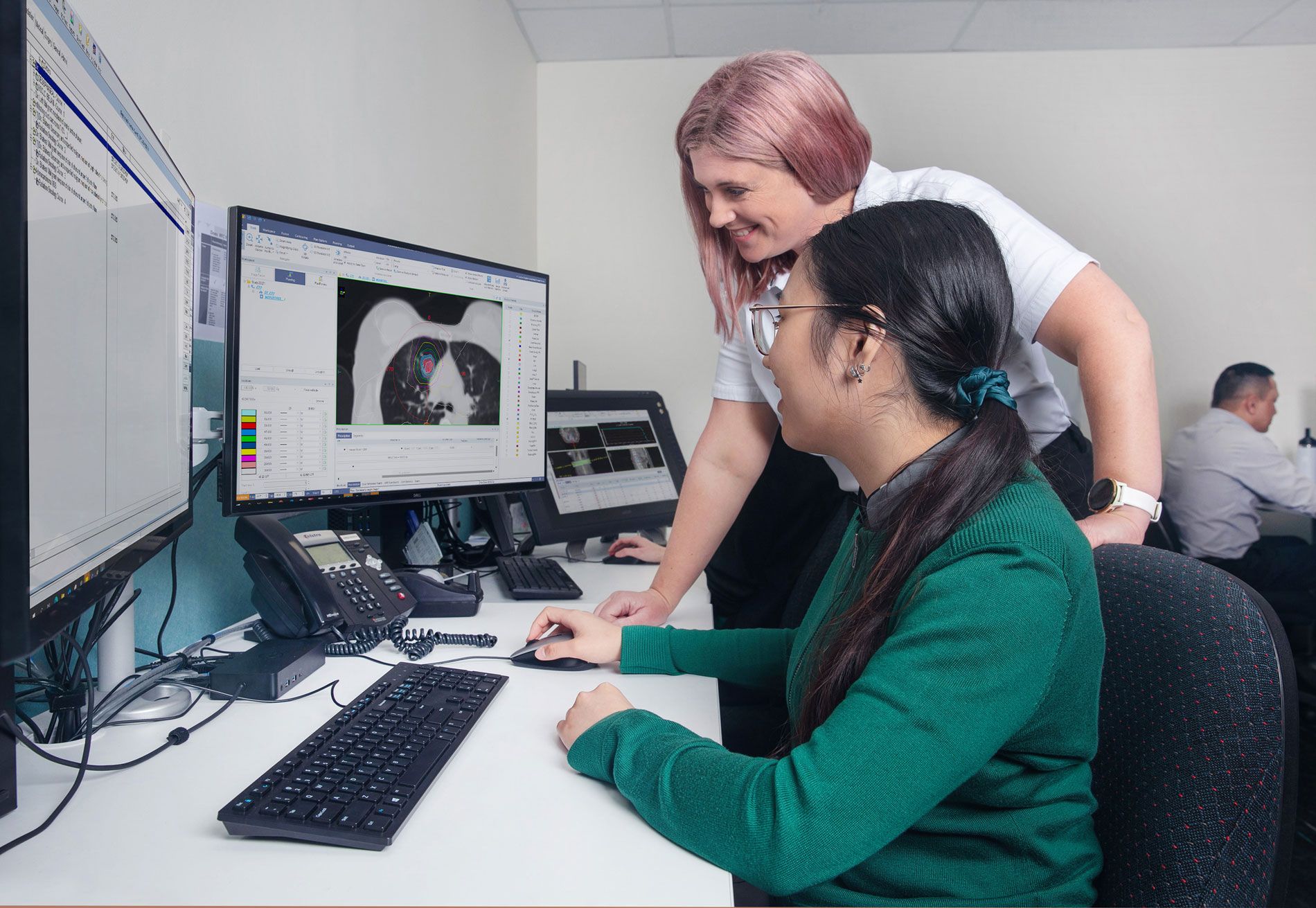Pair of Elekta linacs gives German center the perfect solution for lung stereotactic radiotherapy
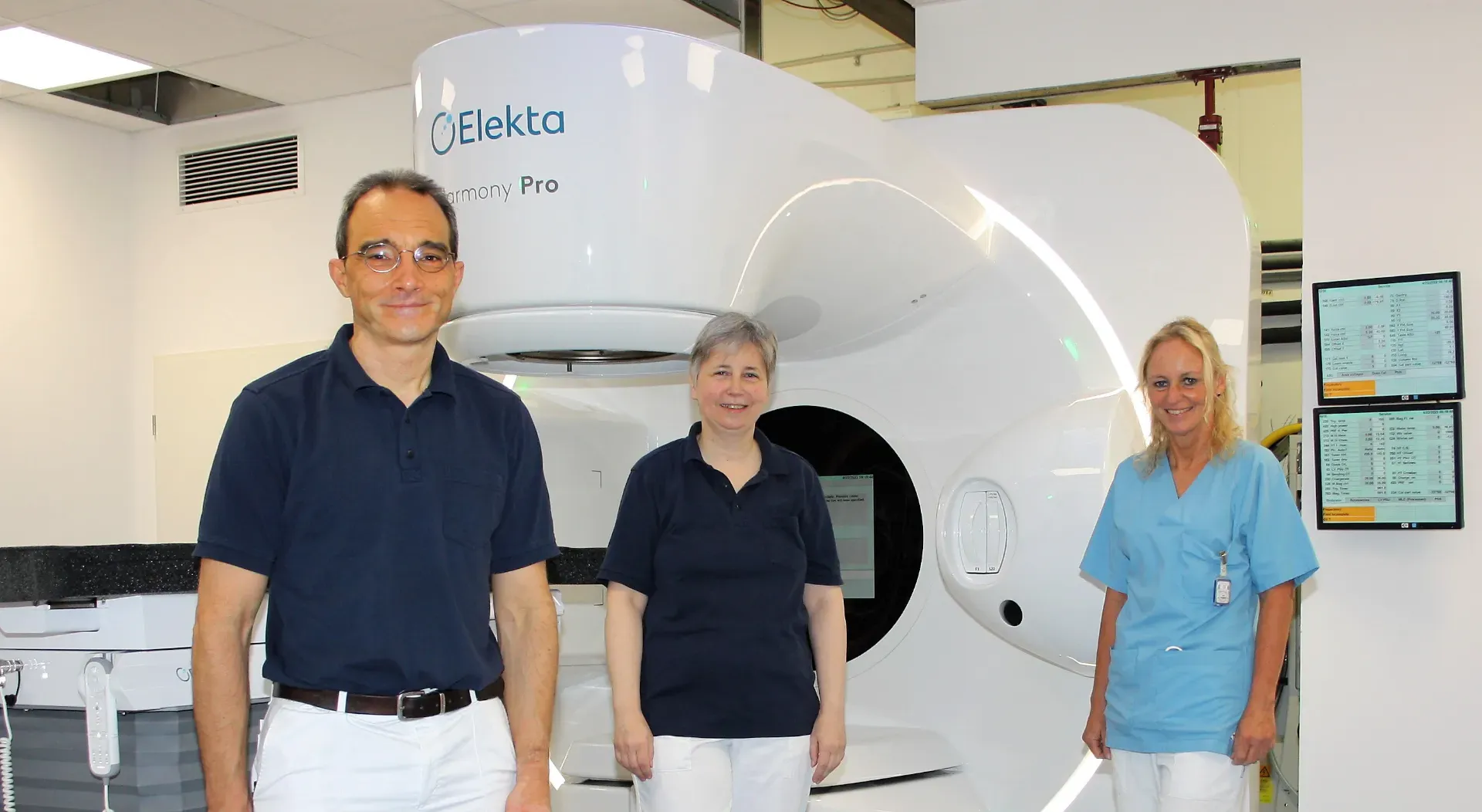
Addition of Elekta Harmony Pro in 2022 – beam-matched with existing Elekta Synergy – creates an ideal VMAT, SRS/SBRT team at lung cancer specialty clinic Lungenklinik Hemer
Lungenklinik Hemer’s Elekta Synergy® system and newly acquired Elekta Harmony Pro linac – beam-matched with each other – are completely interchangeable, enabling them to flexibly deliver VMAT or sliding window IMRT to 90 percent of the center’s caseload, which comprises breast, prostate, head-and-neck and lung cancer. But for SRS/SBRT of brain mets and primary lung lesions, Lungenklinik (Hemer, Germany) dedicates brain mets to Elekta Synergy and lung cancer to Elekta Harmony Pro, creating an optimal balance that helps the center treat about 90 patients each day accounting for all indications.
“The medical staff and the radiation therapy technologists [RTT] in particular were impressed with the workflow benefits and overall design of Harmony.”

“The medical staff and the radiation therapy technologists [RTT] in particular appreciated the workflow benefits and overall design of Harmony,” says Stephan Dröge, Chief Medical Physicist at Lungenklinik Hemer, one of Germany’s largest lung cancer specialty centers. “Replacing the existing non-Elekta linac with Harmony also let us use only MOSAIQ® as the OIS and Monaco® as the treatment planning system.”
After deciding to purchase Harmony, Lungenklinik staff were impressed with the system’s installation time, according to Dröge.
“From the moment Elekta started installation to the point at which we could begin commissioning was only about two weeks,” he recalls. “The project plan indicated it would take four weeks, so installation was really fast.”
Lungenklinik employed its IBA* myQA software for Harmony commissioning, as it did for Synergy commissioning when the center acquired the software in 2014. In addition to Harmony, Lungenklinik Hemer acquired IBA’s SmartScan. SmartScan also facilitated beam matching of Harmony and Synergy, which makes the beam matching process very smooth and reliable.
“There was no huge commissioning process using the myQA solution,” Dröge remembers. “You have templates and we had built up a template for Synergy, and since the two machines are beam matched, we were able to copy and paste from the template to add the complete QA Workflow for Harmony. Therefore, it’s no additional work than necessary. We only had to measure some profiles as new reference values and that’s all. It saved us a lot of time.”
After only two days of RTT training, Lungenklinik began using Harmony clinically in August 2022.
A perfect team for SRS/SBRT for brain mets and primary lung tumors
While both Synergy and Harmony systems have High Dose Rate (i.e., Flattening Filter Free or FFF) mode beam delivery and Elekta Agility beam-shaping, the only major difference between the beam-matched systems is that the Synergy linac is equipped with isocentric table rotation, making it more suitable for treating brain mets, Dröge observes.
“Conversely, the isocenter accuracy of Harmony is nominally more accurate than that of Synergy – both are less than one millimeter on the isocenter – but Harmony’s accuracy is still a little better, so we can leverage that extra accuracy for lung lesions,” he says.

For all non-SRS/SBRT cases, however, the linear accelerators back each other up in the event of unscheduled downtime or for special cases.
“An example of the latter is if we have a stereotactic lung cancer case and we use jet ventilation for one-time radiosurgery,” Dröge explains. “Administering jet ventilation is very time-consuming because we need to use anesthesia, so that means for lung SRS we need 30 minutes for a single patient. To balance the load on Harmony, we can shift more of the routine VMAT and IMRT cases to the Synergy.”
Some patients haven’t been fond of this idea, however, owing to the more aesthetic appeal of Harmony, he adds.
“Two weeks ago, we needed to move some patients over to the Synergy,” he recalls. “Two patients said they didn’t want to be treated on the other machine because Harmony is more beautiful – it’s less intimidating and more pleasing to the eye.”
Easy pre-treatment QA with EPIbeam
A year before Lungenklinik acquired Harmony, it had purchased web-based EPIbeam** software, a simpler, phantom-less alternative to phantom-based QA options. According to Dr. Dröge, EPIbeam has contributed significantly to a streamlined daily workflow for Harmony and Synergy.
“We are really satisfied with EPIbeam because it is really straightforward to use.”
“We are really satisfied with EPIbeam because it is really straightforward to use,” he says. “You send over a treatment plan from Monaco and – because we have interoperability mode between Monaco and MOSAIQ – there is this nice Monaco feature called AutoSend. With AutoSend, if you approve a treatment plan inside Monaco, the treatment plan will automatically be sent to MOSAIQ and EPIbeam. When EPIbeam receives a treatment plan, the software automatically adds these treatment plans to your worklist. EPIbeam is able to browse through the iView database. If you keep the field ID identical it’s only one mouse click to assign an image to a plan.
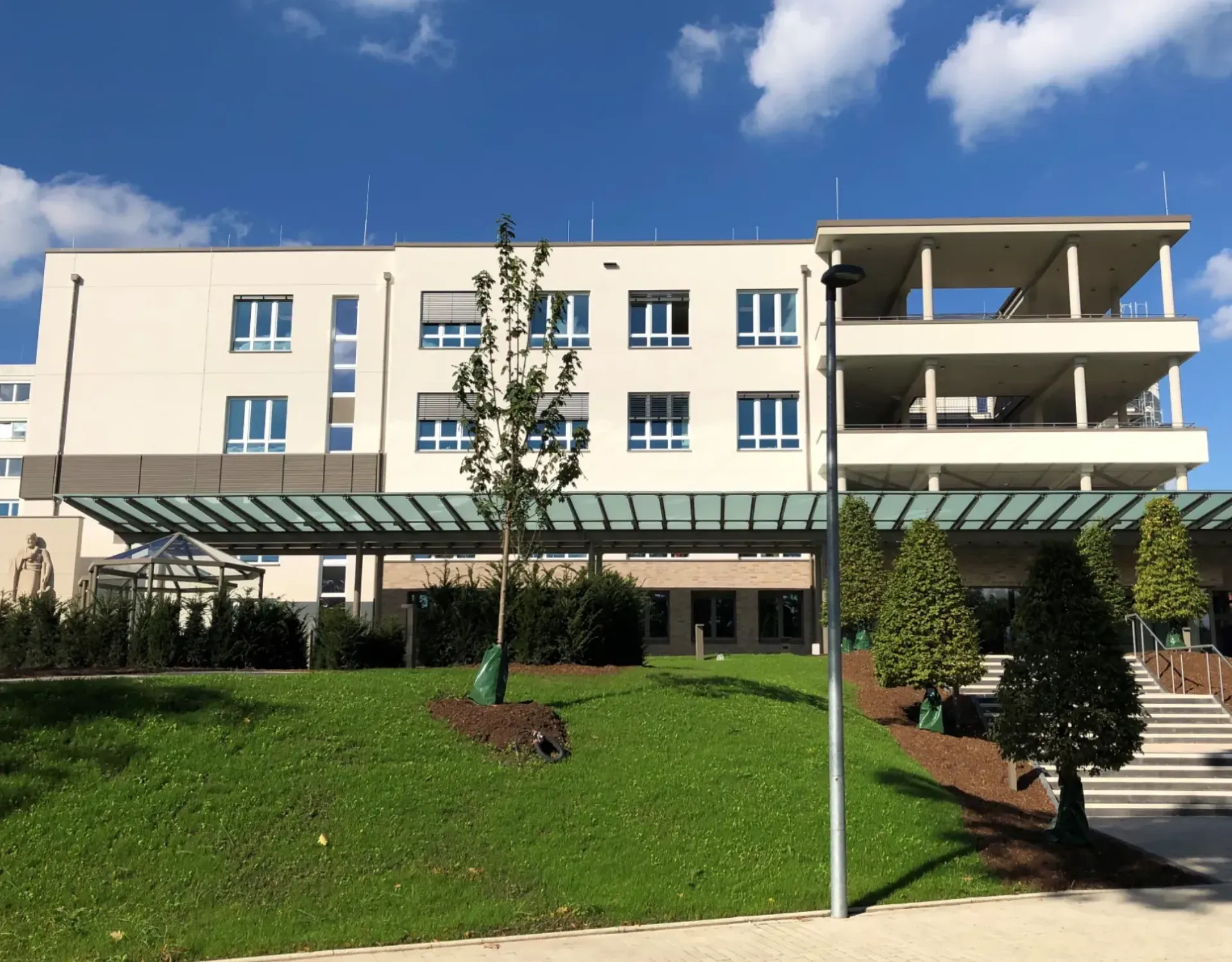
“Once you add a measurement or image, another EPIbeam feature [AutoAnalyze] automatically analyzes the image and compares the fluence from the TPS and the fluence measured through the EPID,” Dröge continues. “Then, if everything is within tolerances, you see a green dot or if something is outside of tolerances you get an attention mark. The last step is automatic export of the report to MOSAIQ.”
The whole EPIbeam process – from the initial plan approval to irradiating the treatment field to the EPID and subsequent steps – takes just 10 minutes per patient.
“The machine will only be booked for two or three minutes. With Compass or My QA patients there is a setup time of 20 to 30 minutes, plus two to three minutes for irradiating the plan, and five minutes for documentation,” Dröge explains. “This translates to 30 to 40 minutes for the first plan and eight to 10 minutes for any additional plan. With EPIbeam we’re able to use any empty patient slot at the linac to do the measurements because there is no setup time. You only have to move the panel in the central position and remove the table extension.”
Harmony productivity features a hit with RTTs
Lungenklinik’s RTTs have been very satisfied with the Harmony FastTrack in-room experience from ease of use and workflow perspectives.
“The option to preload the site setup while the previous patient is still in the room saves time during the workday,” according to Chief Technician Corinna Berghorst. “The site setup’s privacy mode especially is a great advantage, because sensitive patient data are masked where all necessary setup information – such as positioning devices – is available to prepare the treatment couch for the next patient.”
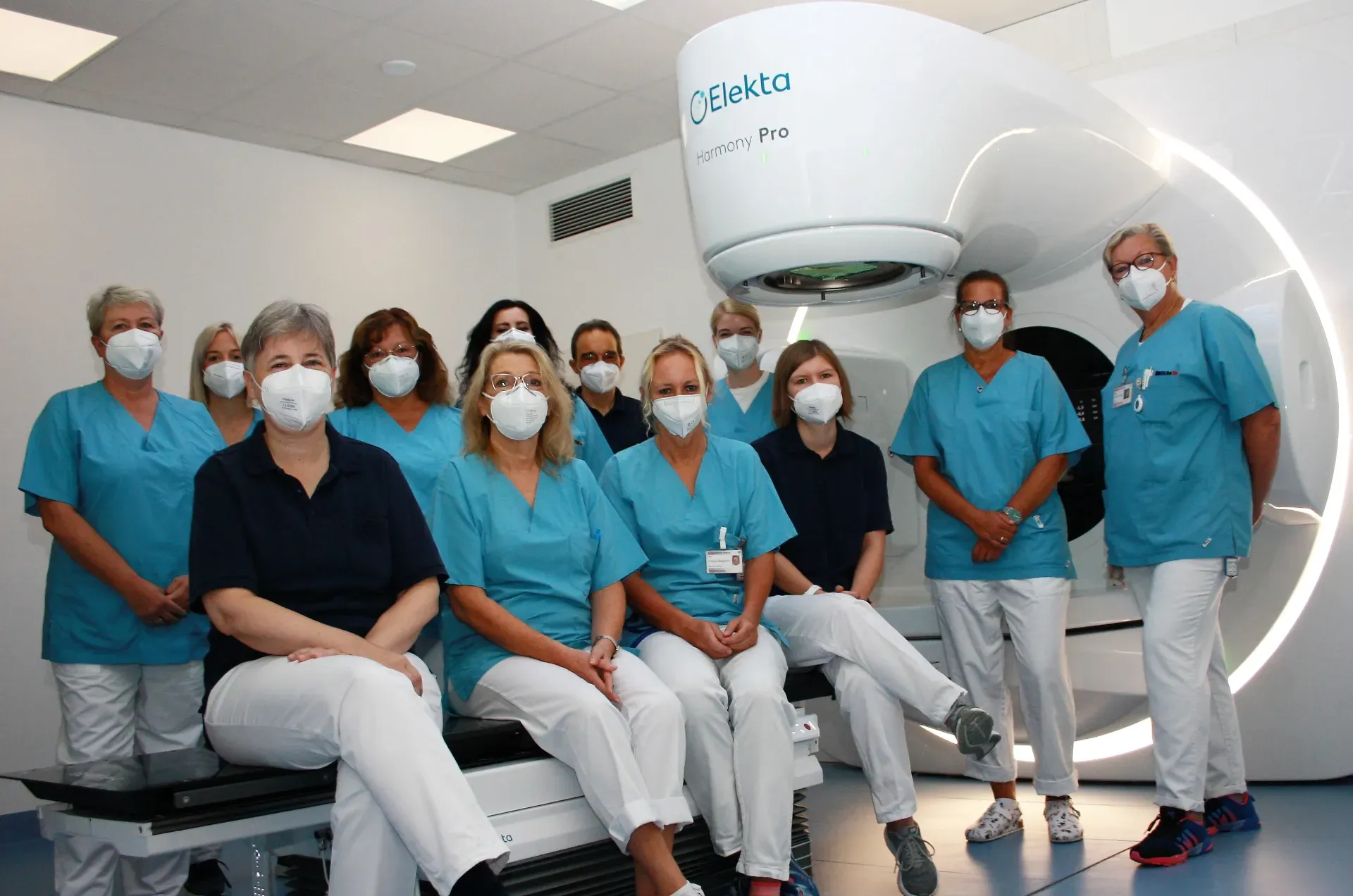
The Harmony central hub screen is another ergonomic design feature that speeds workflow, adds RTT Luise Mrovitcz.
“Using Harmony is quite simple,” she says. “Having the setup information inside the hub is a great advantage and the ASU button in the middle of the table is a nice feature for sending table coordinates to the ATM [Automatic Table Movement]. This avoids the need to ‘send table values’ on a touchscreen that is installed in a corner of the bunker, eliminating our need to move around as much. We can also switch on the laser and switch off the treatment room right from the couch.”
At home in a lung specialist RT clinic
After nearly six months, Lungenklinik’s Harmony system is well-integrated in the radiation oncology department, working productively alongside the Synergy system and helping balance the SRS/SBRT caseload.
“Harmony has proven to be a system that provides the precision and versatility we need for our center, but most of all the productivity necessary to shoulder half of our stereotactic cases,” Dr. Dröge says. “The RTTs really like operating Harmony, the design is excellent, and it helps us rapidly treat our patients with lung cancer in addition to many other patients with associated oligometastatic disease.”
Learn more about Elekta’s patient QA solutions.
*Elekta and IBA have a global collaborative distribution agreement. Contact your Elekta sales representative for further information on IBA dosimetry solutions with Elekta linacs.
**EPIbeam designed by DOSIsoft S.A. It is CE marked and FDA cleared. For other markets, contact your Elekta sales representative.
LARHPL230309

